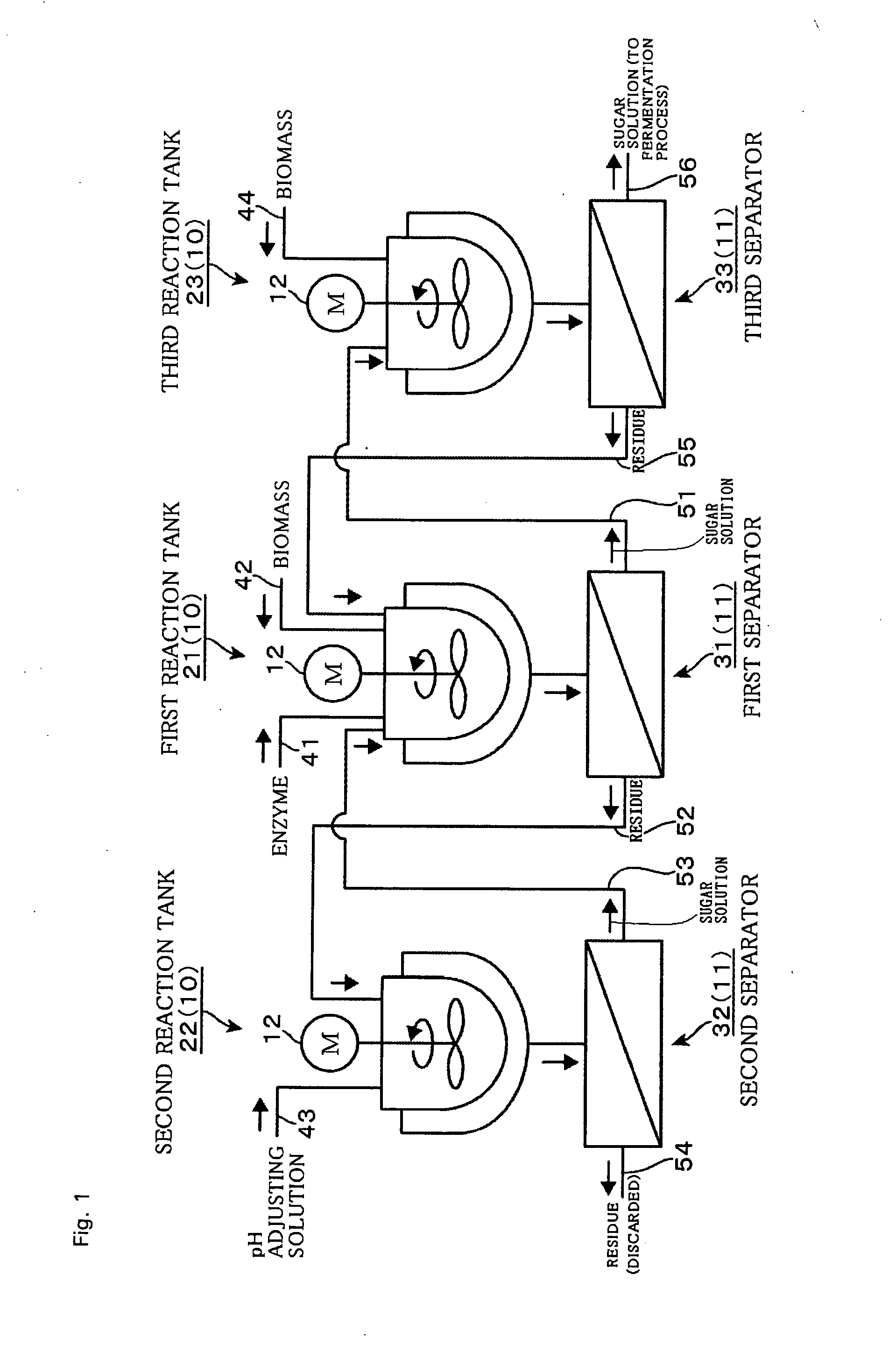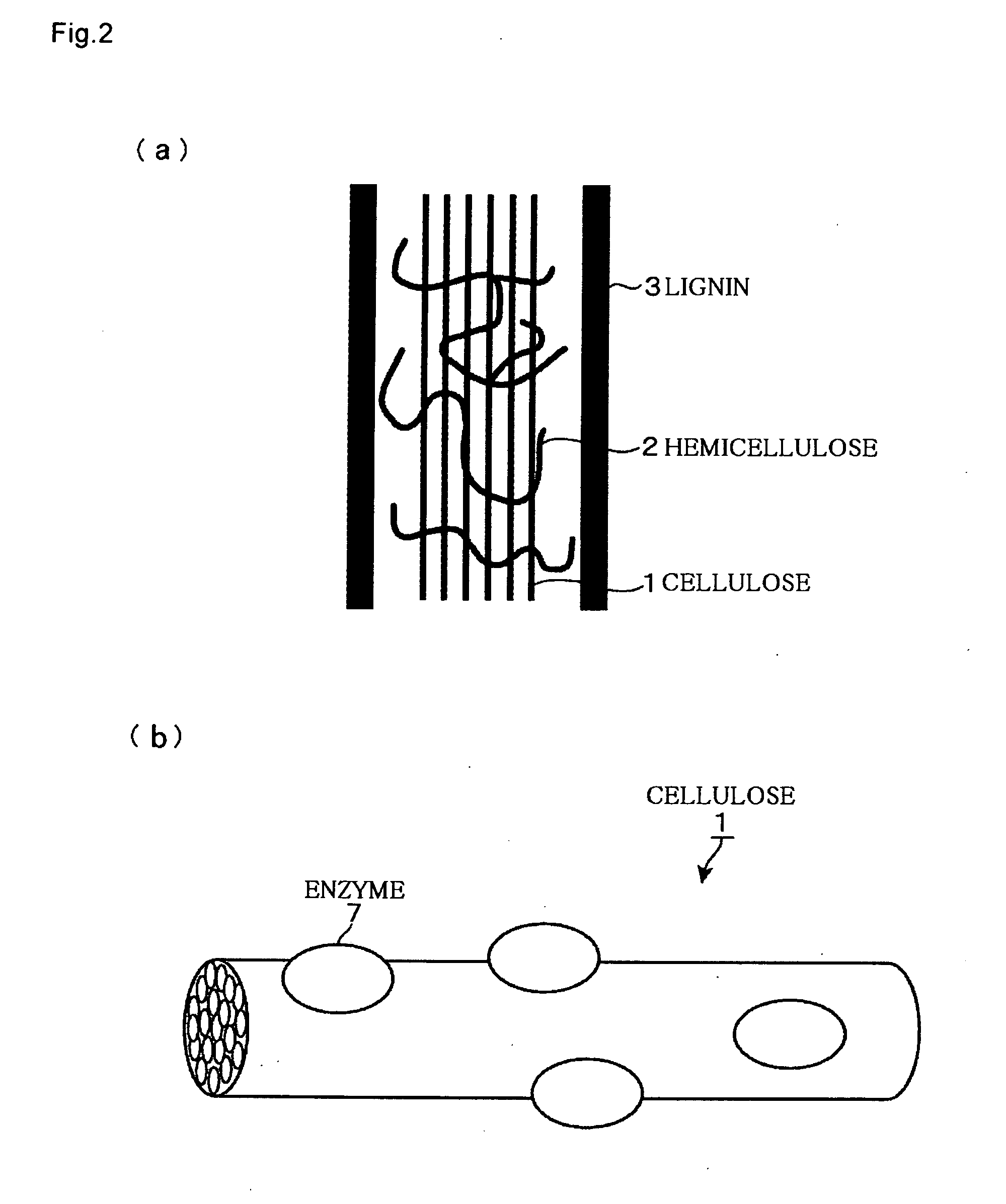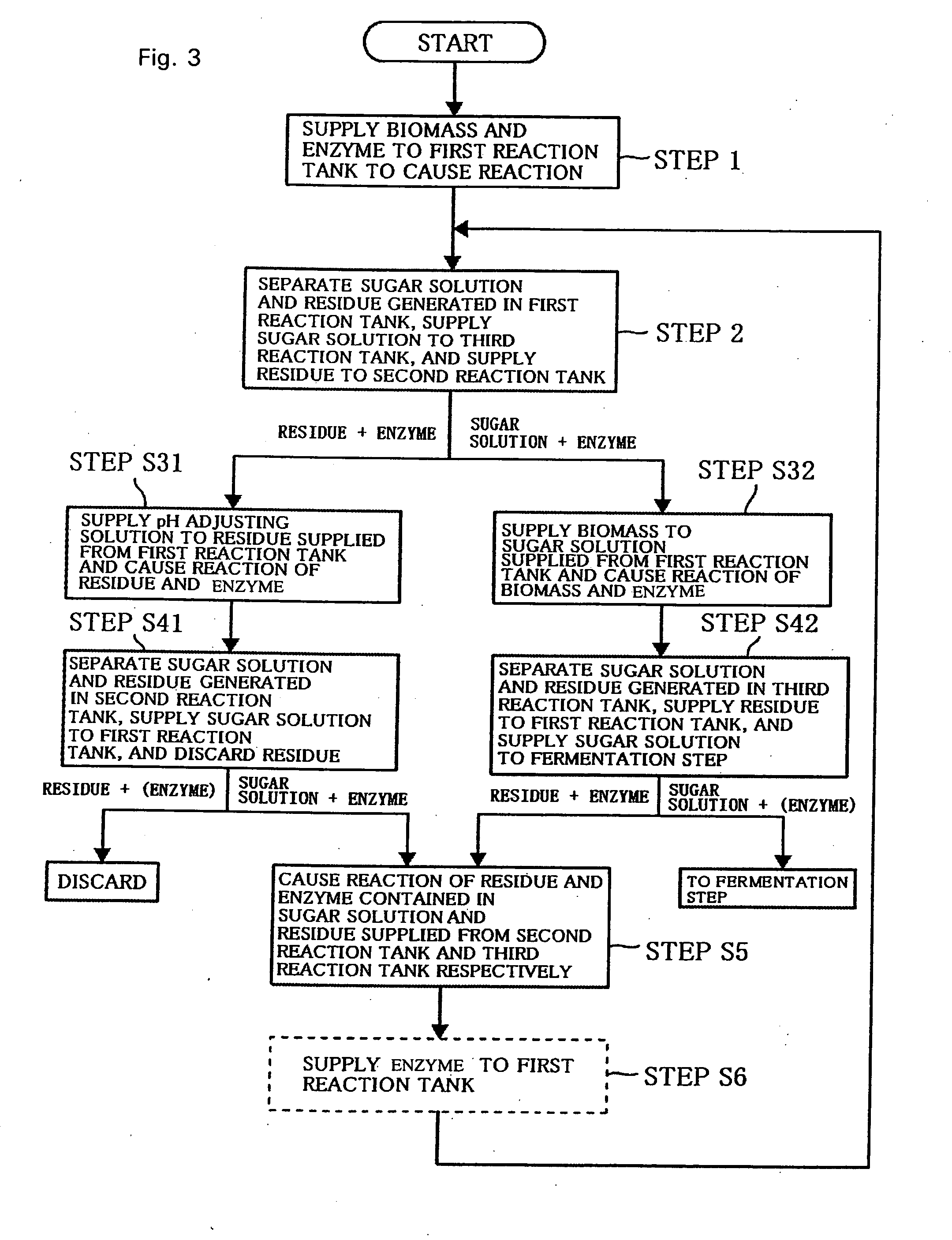Method of producing sugar solution and saccharification device
a production method and sugar solution technology, applied in specific use bioreactors/fermenters, biomass after-treatment, biochemical apparatus and processes, etc., can solve the problems of high cost, short membrane life, and high cost of enzymes used to produce sugar solutions, so as to reduce the amount of discarded residues, the effect of effective use of enzymes and low cos
- Summary
- Abstract
- Description
- Claims
- Application Information
AI Technical Summary
Benefits of technology
Problems solved by technology
Method used
Image
Examples
second embodiment
[0123]Alternatively, the number of the reaction tanks 10 may be two. Such a sugar solution producing device will be described with reference to FIG. 11, taking as an example a case where a residue is settled down in the above-described manner, and two first reaction tank 21 and second reaction tank 22 also serve as the first separator 31 and the second separator 32 respectively. The same portions as those of the above-described embodiment will be denoted by the same reference numerals and description thereof will be omitted.
[0124]Regarding the two reaction tanks 21, 22, for convenience sake, the left one is called a first reaction tank 21 and the right one is called a second reaction tank 22, and an enzyme supply path 41, a biomass supply path 42 (biomass adding path 44), a pH adjusting solution supply part 43, a residue discharge path 54, and a sugar solution recovery path 56 are connected to each of the reaction tanks 21, 22. In the description below, “first” is appended to the su...
example
[0129]Next, regarding the results of the various experiments already described in detail, conditions, brief results, and so on of the experiments will be described below.
[0130]FIG. 14: Experiment for Evaluating Correlation between Reaction Time and Sugar Concentration
[0131](experiment condition)
[0132]substrate (biomass): filter paper 10 g
[0133]enzyme: 5 ml
[0134]buffer solution: 95 ml
[0135](experiment result)
[0136]A decomposition rate (an increasing rate of the sugar concentration) decreased with time.
[0137]FIG. 15: Experiment for Evaluating Correlation Between Amount of Raw Material Charged to Reaction Tank and Saccharification Ratio (Sugar Yield)
[0138](experiment condition)
[0139]substrate (biomass): filter paper
[0140]charge amount of substrate: 10 g, 25 g, 30 g, 35 g, 40 g
[0141]enzyme: 5 ml
[0142]buffer solution: 95 ml
[0143]reaction temperature: 50°
[0144](experiment result)
[0145]As the charge amount of the raw material increased, the saccharification ratio decreased.
[0146]FIG. 16: E...
PUM
 Login to View More
Login to View More Abstract
Description
Claims
Application Information
 Login to View More
Login to View More - R&D
- Intellectual Property
- Life Sciences
- Materials
- Tech Scout
- Unparalleled Data Quality
- Higher Quality Content
- 60% Fewer Hallucinations
Browse by: Latest US Patents, China's latest patents, Technical Efficacy Thesaurus, Application Domain, Technology Topic, Popular Technical Reports.
© 2025 PatSnap. All rights reserved.Legal|Privacy policy|Modern Slavery Act Transparency Statement|Sitemap|About US| Contact US: help@patsnap.com



